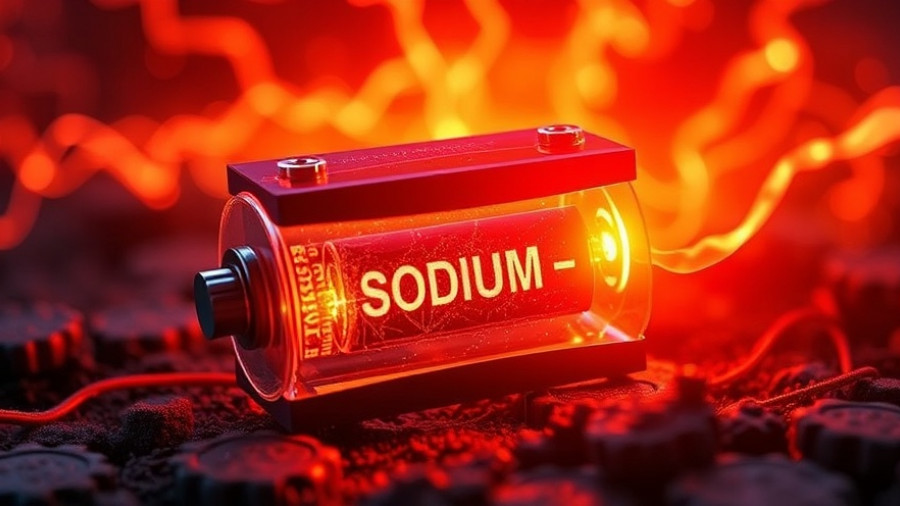
Charting a New Course: The Rise of Sodium-Ion Batteries
The emergence of sodium-ion batteries marks a significant turning point in the world of energy storage, providing a credible alternative to lithium-ion technology. The innovative partnership between JAC Motors and Volkswagen has made it possible for the Sehol E10X, equipped with sodium-ion batteries, to hit the market as early as 2023. As these batteries gain traction in not just automotive applications, but also home energy storage, it's clear that sodium-ion technology is more than just a trend; it's shaping the future of energy solutions.
Technological Breakthroughs Broadening Possibilities
Sodium-ion batteries have shown promising advancements in energy density and cycle life, crucial factors that influence their viability. Initially, their gravimetric energy density of 145 Wh/kg paled in comparison to Lithium Iron Phosphate (LFP) batteries. However, innovations are already underway, with technologies such as HiNa's batteries boasting cycle lives of 4,500 cycles. Such developments underline the potential for sodium-ion batteries to effectively support diverse applications ranging from cars to larger mobile power systems previously dominated by conventional fuels.
Affordable and Abundant: A Competitive Edge
One of sodium-ion’s most significant advantages over lithium-ion alternatives is its cost-effectiveness and resource abundance. Sodium is more plentiful and accessible compared to lithium and cobalt, making it an attractive alternative amid growing concerns over resource scarcity. The lower production costs associated with sodium also mean that energy storage will become more affordable overall. In fact, CATL has announced pricing at the cell level of $19/kWh, highlighting the financial readiness of sodium-ion technology for wide-scale adoption.
Real-World Applications: From Automobiles to Shipping
The implications of this new technology extend far beyond the automobile sector. As sodium-ion batteries promise excellent performance across a range of temperatures and long cycle life, they are poised to redefine energy storage for electric shipping and other heavy-duty applications. Coupled with lower operational costs compared to Internal Combustion Engines (ICE), the transition to electric mobility solutions appears highly feasible. With such advancements, the push for cleaner, more sustainable operations in various industries is gathering momentum.
Regional Support: Governments Take Notice
Significant initiatives from governmental entities aimed at promoting sodium-ion technologies underscore its importance in the global energy landscape. Notably, the U.S. Department of Energy has committed $15.7 million towards advancing sodium-ion technology, confirming the value placed on fostering sustainability and energy security. Similarly, the European Union has funded related research, accelerating the advancement of this technology in a region keen on transitioning to greener practices.
Actionable Insights: What Builders and Contractors Need to Know
Contractors and builders focused on sustainability should prioritize understanding sodium-ion technology’s implications for future projects. The advantages of sodium-ion lies not just in cost but also in fostering diversified energy solutions. For businesses venturing into green construction, now is the opportune moment to integrate sodium-ion batteries into energy planning. The feasibility of achieving cost parity with traditional energy sources illustrates the viability of using these batteries in large-scale applications.
Conclusion: A Transformative Era for Energy Storage
The sodium-ion battery revolution is just beginning. With ongoing innovations and a growing recognition of its potential benefits, this technology is set to reshape energy infrastructure significantly. As we delve deeper into a more sustainable future, sodium-ion batteries will provide builders and contractors with crucial opportunities to lead in the transition toward cleaner energy solutions.
 Add Row
Add Row  Add
Add 




Write A Comment